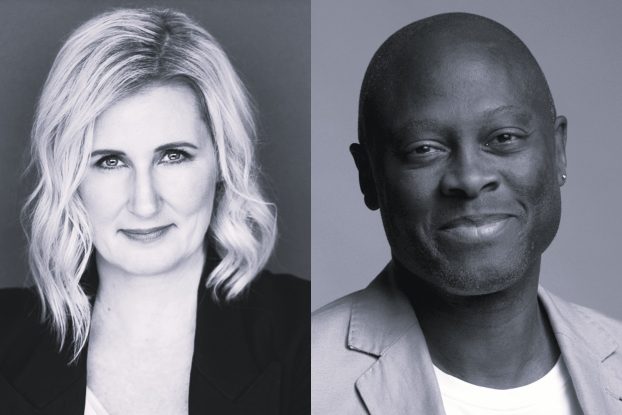This story originally appeared in the Spring 2021 issue of strategy.
As the world stands still, content, innovation and product pivots continue to accelerate. What have we done? Where are we now? And what will the next year bring? In a series of roundtables, we tapped the expertise of our CMO Council advisory board to find out. Here are some areas in which marketers are applying agility and ingenuity like never before.
Scrapping old playbooks and testing how far brands will stretch
The CMO Council members channeled Winston Churchill when discussing the pandemic’s impact on innovation this past year. “Never let a good crisis go to waste,” was a common retort.
Marketers and business leaders have been busy tearing up old playbooks, as the world moves quickly yet waits at a standstill. Across sectors, the pandemic unleashed business model innovation at a scale unseen in the recent past.
“In the short term, everybody had to shift and adjust,” says Jeremy Oxley, VP of marketing, strategy and insights at Danone. “But in the long term, it’s going to be a good opportunity for new businesses to form and new opportunities to evolve out of the crisis.”
 Toronto’s General Assembly Pizza is a notable example of a successful business model pivot. The fast-casual pizza chain’s dine-in model was severely hampered by lockdown restrictions, so it pivoted and started making frozen pies for grocery stores. Later, in September, it launched what it calls the “the world’s first pizza subscription.” After having earned 2,000 subscribers, it raised $13 million from investors and plans to expand nationally.
Toronto’s General Assembly Pizza is a notable example of a successful business model pivot. The fast-casual pizza chain’s dine-in model was severely hampered by lockdown restrictions, so it pivoted and started making frozen pies for grocery stores. Later, in September, it launched what it calls the “the world’s first pizza subscription.” After having earned 2,000 subscribers, it raised $13 million from investors and plans to expand nationally.
Elsewhere in food service, QSR Freshii is ramping up category innovation, expanding its health and wellness cred outside of food and restos with the March launch of Apple Cider Vinegar Gummies, its first supplements product. And fast-casual competitor Mad Radish opened two new banners, Luisa’s Burritos & Bowls and Revival Pizza, under the same physical roof as Mad Radish but with their own digital storefronts – giving customers new options and boosting sales without the operational costs and risks of opening individual physical locations.
This innovate-or-die mindset has allowed marketers to take a different seat at the table, notes Mangala D’Sa, VP of marketing, category and digital experience at Aegis Brands, former parent co. of Second Cup. “It’s no longer just product innovation – it’s business model innovation,” she says, because the pandemic has “forced everyone to think more holistically in terms of how we meet the needs of consumers.”
Innovating against fear to create new comfort zones
A surprising nugget to come out of Edelman’s March 2021 Trust Barometer is that contracting COVID-19 ranked as the fourth-biggest concern among Canadians, says Jill Schnarr, chief social innovation and communications officer at Telus. A year into the pandemic and consumers expressed greater concern (and outright fear) over losing their jobs, a cyber attack and climate change – in that order – than COVID by margins of 3% to 15%. Schnarr says those trends and fears “will impact a lot of what we do.”
Case in point: after 20 years of touting “The future is friendly,” this year Telus changed its brand promise to “Let’s make the future friendly.” The telco’s tag needed updating to reflect its investments in social capitalism and other sectors, like agriculture. But the new wording also captures a nuance in sentiment: the future is less friendly and more uncertain than before, so companies must work to improve it.
 “We’re evolving our mission, our values and all these things that we’ve held so dear for the last two decades,” Schnarr says. “We have to showcase how we’re evolving and changing, because the whole world has changed.”
“We’re evolving our mission, our values and all these things that we’ve held so dear for the last two decades,” Schnarr says. “We have to showcase how we’re evolving and changing, because the whole world has changed.”
In the world of CPG, the CMOs believe consumers’ health and safety concerns will outlast the pandemic, forcing companies to rethink in-store sampling programs, whose days “are long gone,” says Oxley. “Maybe they’re not gone forever. But I don’t know if I’ll see [them again] in my lifetime as a food marketer.”
Companies are already shifting their plans. Premium mixer brand Fever-Tree, for example, has driven trial through a unique dining experience inside a heated dome outside the Fairmont Chateau Whistler. Elsewhere in CPG, companies like DavidsTea – with its newly launched “Tea Tasting Club” seasonal subscription box – are experimenting with at-a-distance sampling programs that continue to serve the purpose of building community with customers.
Playing catch-up: Digital CX one-upmanship
No matter the category you play in, it’s hard not to envy how Amazon transformed the retail landscape. During the pandemic, many new entrants to the ecommerce space – and there were many – found themselves needing to match the retail giant’s bar.
 “Everyone’s expecting an Amazon-type experience in whatever touchpoint they have,” Oxley says.
“Everyone’s expecting an Amazon-type experience in whatever touchpoint they have,” Oxley says.
In the physical world, that means testing and learning Amazon-like technologies. To ensure it remains in lock-step with the retail giant, and shifting definitions of a “frictionless” experience, Quebec’s Alimentation Couche-Tard partnered with McGill University on an innovation lab. The space resembles a regular Couche-Tard store but allows customers to select items that are paid for automatically within an app – one of many new technologies that will be tested.
In retail as a whole, customers’ appetite for a one-stop shop experience has grown, fuelled in part by the growing number of customers buying online. It’s one of the reasons Hudson’s Bay is entering new and expanded categories – including sports, tech, pets, health and wellness – having recently launched an online marketplace that will feature 500 new sellers on its website by the end of 2021.
“It’s almost less about the product, and more about the purchase and service experience,” adds Schnarr. “If you’re making me have to put less work into getting your product or service, I’m going to… continue to buy from you.”
During lockdowns, IKEA’s network shrunk from 14 bricks-and-mortar stores to a single, digital store. “One [challenge] has been the inspiration,” says Johanna Andrén, head of marketing. In home furnishings, “You still want to be inspired… and when you cannot go to a store and get that, we need to offer that online.”
 So after ending its iconic catalogue’s 70-year print run, the retailer enhanced its online presence, with a content hub focused on how to live more sustainability, for example. And to get product into people’s homes, it launched click-and-collect, as well as collection lockers accessible to customers at all times without entering the store.
So after ending its iconic catalogue’s 70-year print run, the retailer enhanced its online presence, with a content hub focused on how to live more sustainability, for example. And to get product into people’s homes, it launched click-and-collect, as well as collection lockers accessible to customers at all times without entering the store.
At GE Appliances, chief brand officer Bob Park says the trick was to meet customers’ service expectations around purchasing its high-ticket items. With the company’s luxury appliance brand, Monogram, customers typically consult with a designer, and the service is much more personal. During COVID, “we’ve leaned on virtual technologies, trying to show them what their kitchen would look like without bringing them into the showroom,” he says.
Automotive brands have also put more focus on digital experiences. In December, Nissan unveiled a digital hub in which customers can explore its latest models, speak with experts and join live-stream group and individual tours. Acura took a similar approach to off-setting the loss of physical auto-shows with a microsite that told the brand’s story through interactive features, video clips and a browser-based game.
CRM and content plays accelerate
As ecommerce penetration grew over the pandemic, PepsiCo used the opportunity to enhance its content strategy through Tasty Rewards, says the CPG’s CMO Ian Adler.
 The marketer says the company is now bringing all of its individual brand sites under the CRM platform, which has experienced a “massive acceleration,” creating new opportunities to connect consumers with its full portfolio of brands through content and recipes.
The marketer says the company is now bringing all of its individual brand sites under the CRM platform, which has experienced a “massive acceleration,” creating new opportunities to connect consumers with its full portfolio of brands through content and recipes.
“We know consumers want to enjoy and play and go back-and-forth [between brands],” he says. “And behind the scenes, there’s a whole separate story on what that means from a data standpoint, and what we can do from a mass personalization perspective.”
P&G is also investing in connecting loyalty with content across its full portfolio of brands. In March, the CPG launched its Good Everyday platform in Canada. First launched in the U.S., the platform rewards customers with perks and points that are used to donate to causes, supporting the company’s “force for good” strategy. It also serves as a content hub, with stories demonstrating the impact the company makes through its various initiatives. And like Tasty Rewards, it allows P&G to collect first-party data by asking users to upload receipts and participate in quizzes.
 But CPGs aren’t the only companies whose content plays have accelerated during the pandemic. Banks, which Scotiabank CMO Laura Curtis Ferrera admits aren’t typically grouped into the category of “agile at scale,” also proved they could move fast and with scale.
But CPGs aren’t the only companies whose content plays have accelerated during the pandemic. Banks, which Scotiabank CMO Laura Curtis Ferrera admits aren’t typically grouped into the category of “agile at scale,” also proved they could move fast and with scale.
Last year, Scotiabank began offering advice across three content hubs tailored to the needs of those impacted by the crisis: Bank Your Way (offering instructions for seniors and new digital customers), Advice + (for financial planning and budgeting), and a dedicated space for the Scotiabank Women Initiative (supporting women entrepreneurs). Other big banks also launched or expanded similar content platforms. RBC added new features and information to its MyAdvisor hub, while CIBC created Advice for Today and BMO launched Financial Advice You Can Count On.
“It probably advanced [the sector] by a decade in terms of how we consider content,” she says. “Now the question is, how do you stay that agile at scale? How do you keep content developed that way?”
























